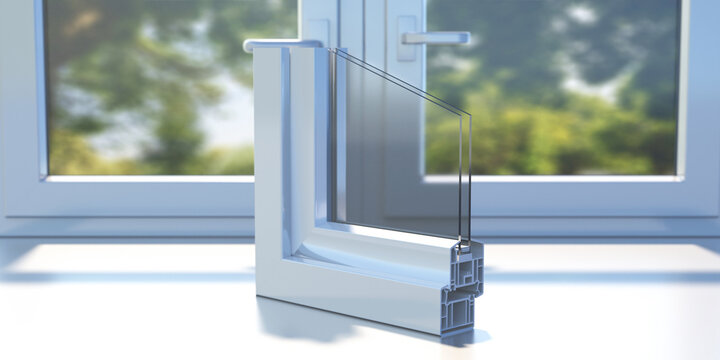Mesothelioma is a malignancy that develops in the abdominal cavity and linings of the lungs, heart, and testis. It develops after exposure to asbestos minerals, a primary risk factor. Asbestos exposure can occur through several channels and modes, such as working in high-risk occupations and industries. But other minerals, substances, and toxins can also increase risks. For instance, some evidence link mesothelioma to erionite, crystalline silica, radiations, and other fibrous substances. Contaminated products and household items can cause secondhand exposure.
Either way, one can come into contact with such carcinogenic substances at home, workplace, or somewhere else. And you may not notice exposure risks or active signs because mesothelioma develops and progresses silently in the early stages. So, be careful of exposure to toxins and carcinogens. And do not take exposure risks lightly.
Prevention of Mesothelioma
Check labels for toxins in regular-use items, such as paint, insulators, appliances, machinery, beauty products, etc. Observe precaution and safety practices while handling or using risk-prone items. Most importantly, avoid DIY home improvement work in an older house if you are doubtful of asbestos in its construction.
It’s also advised to consider a detailed medical examination to measure risks when you suspect asbestos exposure in your home or workplace. Seek immediate help from healthcare specialists when you experience sickness symptoms like coughing, abdominal/chest pain, high fever, fatigue, weight loss, and breathing difficulty. You can also consult a mesothelioma lawyer for legal assistance if your diagnosis relates to asbestos exposure. Credible law firms like the Simmons Law Firm can offer guidance and assist you in filing a lawsuit. You may attain financial compensation from the negligent parties through their legal assistance.
Asbestos Contamination
Asbestos is a generic name for six fibrous minerals, including crocidolite, chrysotile, anthophyllite, tremolite, amosite, and actinolite. These minerals have high flexibility, strength, and resistance to corrosion, heat, and electricity. Combining them has several practical applications and uses in industries and households. But these minerals are carcinogenic and frequent interaction can increase the chances of developing malignancy, such as mesothelioma and asbestosis. If you’re living in an old house, chances are asbestos was used in its construction in one way or another.
Studies estimate that asbestos is the primary cause of developing mesothelioma in 70–80% of cases. Mostly, individuals working in mining, construction, manufacturing, textile, insulation, and power industries are more prone to exposure. And these workers can increase secondhand exposure chances for their families and social circle.
Now, to ensure proper prevention of mesothelioma, let’s discuss which household products can cause this cancer:
1. Paint
Asbestos and asbestos additives enhance the paint’s color, texture, durability, and stability, making the coating suitable for hot and cold weather. It was a magic formula for manufacturers in the past. And houses constructed in the 1990s or before have higher chances of asbestos in paint, plaster, and cement. Usually, asbestos plaster is coated with another layer of paint. And until that outer paint layer is intact, residents are not at risk. But exposure risks increase when paint coating wears off walls and ceilings. Worn-out paint coatings release asbestos fibers and contaminate every corner of a house. And residents can ingest microscopic fibers that fall on clothes, utensils, and food or inhale airborne particles.
2. Cosmetics
Asbestos minerals are found in nature, similar to most minerals used in cosmetics. If these minerals are found in a common deposition site, traces of asbestos fiber can mix with minerals used for cosmetics and come into human contact. Poor regulation, lack of awareness, and improper extraction, handling, and processing of these minerals can increase contamination risks.
Several studies have also raised caution for toxins in deodorant talcum powders and other talcum-based cosmetics, such as face powders, eye shadows, and powdered blushes. One extensive study found 15% asbestos contamination from laboratory tests on 21 cosmetic samples. Even if your products claim skin-friendly use, they may contain minor traces. And regular use can increase the risks of developing mesothelioma and asbestosis.
3. Contaminated Clothes
Hazardous chemicals can have several routes, channels, and sources to get to your home and contaminate the environment. Contaminated clothes are one source. Your family members can carry traces of toxins and hazardous substances on their clothes and uniforms if they work in high-risk jobs and industries, such as the power sector, shipbuilding, construction, mining, automobiles, demolition, and concrete manufacturing. Technicians, mechanics, plumbers, construction workers, or other service providers from these industries are another medium for toxins to reach your home. Either way, exposure risk increases when they come in close contact with others with dirty hands and contaminated clothes.
4. Floorings and Tiles
Asbestos may have limited use right now, but it was a popular choice for construction previously. Since asbestos minerals have commendable resistance, insulation, and strength properties, it was mixed with construction material to improve binding. It can also help make highly durable, heat-resistant, waterproof, and anti-corrosive cement bricks, sheets, and tiles for flooring and ceiling. So, older houses may have asbestos-mixed material in construction. And in that case, wear and tear of building material, flooring, and ceiling coating and repair or maintenance work can expose residents to asbestos fibers and increase their chances of mesothelioma.
5. Insulation
Asbestos minerals have high insulation and resistance properties. So, asbestos fibers are perfect for plumbing, ventilating, heating, and insulation materials. Insulation made with asbestos can help create an ideal indoor environment in freezing winter or scorching summer seasons. Asbestos insulation coverings and sheets can also insulate a closed space from noise and fire and help create a peaceful environment. But health risks multiply if you live in such a space. Residents can come in contact with asbestos fiber when house insulation ages, wears, and tears and contaminates the indoor environment. One can inhale or ingest tiny particles without even realizing it.
6. Automobile parts
Asbestos can be found in automobile engine gaskets or elsewhere in machinery. The gasket is a mechanical seal that holds or seals surfaces or parts of a machine, engine, or device. The gasket is made from rubber, fiberglass, paper, plastic, metal, and other materials and can have traces of asbestos. Such a material is helpful to withstand heating in automobiles, hold machinery parts together, and minimize friction. Now, people involved in the automobile industry can come in contact with asbestos. Generally, automobile mechanics are more prone.
Conclusion
Since asbestos has high health risks, it is banned in many countries. Some that still use it have strict regulations and handling measures and protocols. But mind that asbestos is not a single cause of mesothelioma in every patient. Other agents, contaminants, and toxins can also increase risks. So, be cautious of potential sources of pollutants and environmental pollution and maintain proper hygiene of your living spaces to minimize exposure risks.










